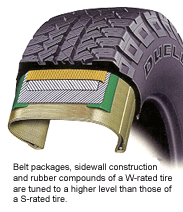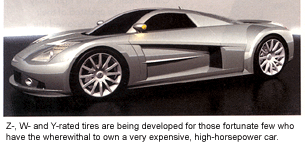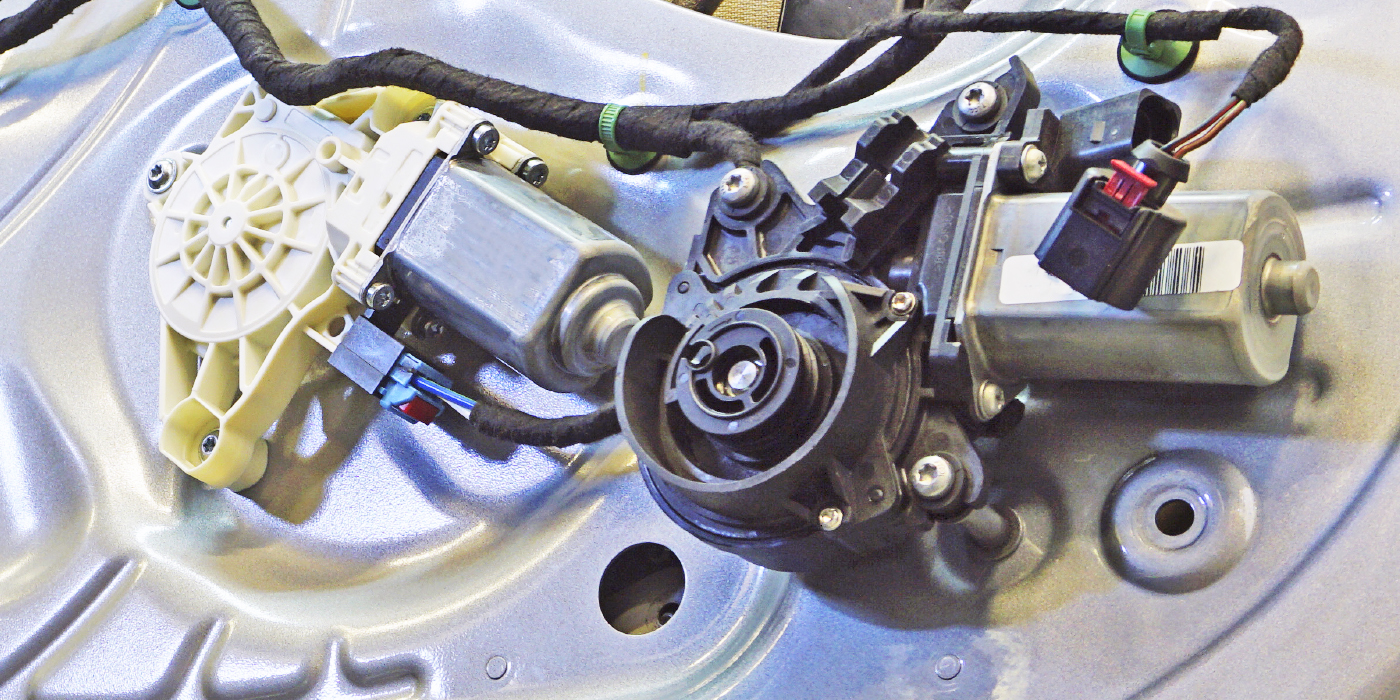There are tire engineers out there who don’t much give a hoot about tire speed ratings. “It’s not even a government regulation,” says one. “There is no government test for speed ratings. The only speed-related test is euphemistically called a ‘temperature resistance test,’ and it’s built around the ability of a tire to disperse heat successfully under controlled conditions on an indoor test wheel.”
A tire’s speed rating, the engineer says, tells us nothing about the performance of the tire, its handling ability, its ride characteristics or the noise it makes. “Read a tire dealer’s website, and you’ll find the same disclaimer. In my opinion, there is no reason to build a tire with anything more than an H-rating for use in the U.S.”
Point taken. Whether that’s right or wrong is open to debate. What we do know is that federally mandated tire safety standards issued back in the late 1960s forced us to make better tires. During this same period, speed-rated radials from Europe were catching on big. The combination of new tire safety laws and speed-rated radials from Europe provided a swift kick in the pants to the U.S. tire industry just when it needed it.
 But that was decades ago. Today, Tire Kingdom’s website says this about tire speed ratings: “Tire speed ratings do not imply that vehicles can be driven safely at the maximum speeds for which the tire is rated, particularly under adverse road and weather conditions. Never operate a vehicle in an unsafe or unlawful manner.”
But that was decades ago. Today, Tire Kingdom’s website says this about tire speed ratings: “Tire speed ratings do not imply that vehicles can be driven safely at the maximum speeds for which the tire is rated, particularly under adverse road and weather conditions. Never operate a vehicle in an unsafe or unlawful manner.”
That conjures up a few questions. Have we gone a bit too far with low aspect ratios and advanced belt packages? Is there a really a need for a Y-rated tire (186 mph plus) in a country where most highways have posted 65-mph speed limits? Have we reached a point of diminishing return?
More directly, does it really matter to the driver?
In most European countries, dealers will refuse to allow a consumer to step down to a lower speed rating, regardless of any price issue. Laws there generally say that the load carrying and speed capability of replacement tires must suit the purpose to which the vehicle will be put. Suitably vague, we’d say.
Still, there is a point to be made. A vehicle’s actual on-road speed is not the issue so much as the durability and handling characteristics higher speed-rated tires afford. Belt packages, sidewall construction and rubber compounds of a W-rated tire are tuned to a higher level than those of a S-rated tire. Road speed aside, a Corvette places entirely different demands on its shoes than a stock Civic.
That’s not to say that a S-rated tire wouldn’t work on a Corvette. Surely it would serve the basic purpose. But there would be a sacrifice – just how noticeable is another argument altogether in performance characteristics, such as road feel, responsiveness and so forth.
It would seem that the argument in favor of speed ratings – or some rating system to denote non-speed performance characteristics holds.
Scanning through a tire fitment guide, though, provides an odd counterpoint. Every make and model of car offered today comes OE with speed-rated tires – and they have for a number of years. Very few 2003 and 2004 models, in fact, sport anything less than an H rating.
Tiremakers are quick to say that the broadline tire market as we knew it has all but disappeared. When even the lowly Chevy Cavalier sports S-rated rubber, that broadline definition ceases to exist.
So, if everything is speed rated, do we still need speed ratings? Will we ever see a tire that needs a speed rating greater than Y? And, since it appears we’ve used up the alphabet, what letter rating would that new tire earn?
We haven’t left ourselves much room for the next level of technology, have we?
Are Speed Ratings Practical?
In the March 2004 issue of Car & Driver, you can read about the new one-off concept car – the ME Four-Twelve from Daimler-Chrysler. This carries a V-12 power plant that generates 850 horsepower and is designed for street or track use. Price: $500,000 if it ever makes it to the showroom floor.
The car, which debuted at the International Auto Show in Detroit earlier this year, is said to be production feasible. Zero to 60 mph passes in 2.9 seconds, and top speed is estimated at 248 mph. The tires are Michelin Y-rated 265/35R19 on the front axle, 335/30R20 at the rear.
Both Daimler-Chrysler and Michelin should be commended for their engineering prowess. An effort of such dimension advances the case for both automotive and tire building excellence. But, for what realistic purpose?
Z-, W- and Y-rated tires are not being developed for the driver of a Ford Taurus, a Honda Civic or a Chevy Impala. They are being developed for those fortunate few who have the wherewithal to own a very expensive, high-horsepower car.
 But will those lucky souls find a place to drive their exotics at speeds above 186 mph? If the cops can catch them, they’ll go straight to jail and lose their driver’s licenses. No fun in that.
But will those lucky souls find a place to drive their exotics at speeds above 186 mph? If the cops can catch them, they’ll go straight to jail and lose their driver’s licenses. No fun in that.
Testing the Limits
Twenty-odd years after the high performance tire segment burst on the American scene, all cars (not pickups or SUVs) produced today come with speed-rated tires – a fact that generally goes unnoticed by consumers until they have to make a replacement decision.
The new Bonneville SLE comes with H-rated tires, for instance, and owners must be warned when replacing tires. If they truly want to replace their H-rated OE tires for less costly S-rated tires, it’s up to the tire dealer to inform them of any potential impact. And smart dealers get customers to sign a document acknowledging that they understand the change.
That’s quite a difference from Europe where that customer would likely be turned away. In North America, dealers would argue against replacing W-rated tires with H-rated rubber (right?) and have the option of refusing the sale. But as our engineer pointed out, there is no law.
Maybe automakers have taken a more realistic approach to vehicle and tire speed ratings. Chrysler’s new 340 hp 300C Hemi comes equipped with H-rated P225/60R18 tires and a speed limiter that harnesses the beast at 130 mph. In fact, nearly everything coming out of Detroit these days has a speed limiter matched to the speed rating of the tires.
Even the famed German Autobahn now has speed limits. Only parts of the 6,800-mile Autobahn system are still wide open. And, those stories about Montana not having any speed limits are wrong. The speed limit in Montana is a firm 70 mph.
Getting Real
It’s worth noting that tiremakers say speed ratings only apply to tires that have not been damaged, altered, under-inflated or overloaded. As the statistics we’ve all seen indicate, an overwhelming majority of drivers are riding on either over- or under-inflated tires. That means most speed-rated tires on the street right now are technically not even speed rated anymore.
Given the realities of the situation – not to mention heavily congested roadways and high-priced gasoline – are we advocating tire speed rating revisions? Not necessarily. But maybe the industry should take a look at the whole thing.
We want safe, reliable tires that can stand up to the most punishing demands a vehicle can place on them. But have we out-engineered reality?
If there are conclusions to draw, they must come from you and your customers. We’d like to know what you think.













